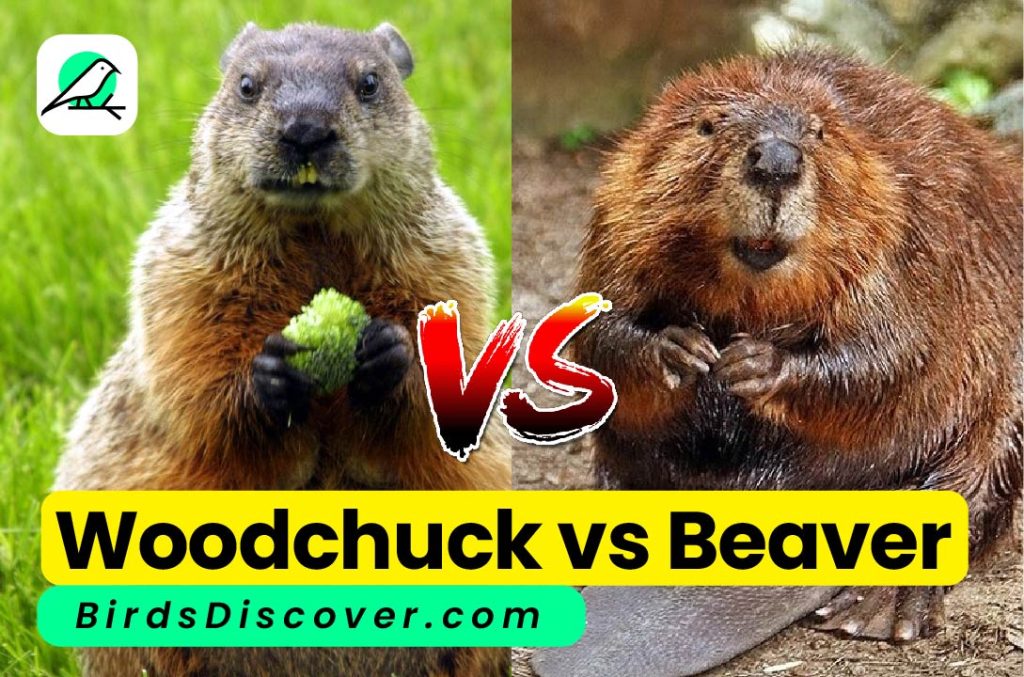Woodchuck vs Beaver: Comparison of Two North American Rodents

Woodchuck vs Beaver
Woodchuck vs Beaver are two iconic rodents native to North America, each playing vital roles in their ecosystems. While both are often associated with rural landscapes, they have distinct behaviors, habitats, and contributions to the environment. This article compares these two fascinating species, shedding light on their differences and similarities.
Taxonomy
- Woodchuck
- Scientific Name: Marmota monax
- Family: Sciuridae (squirrel family)
- Beaver
- Scientific Name: Castor canadensis
- Family: Castoridae (beaver family)
Physical Characteristics
- Woodchuck
- Size: Approximately 16-26 inches in length
- Weight: 5-14 pounds
- Distinctive Features: Stocky body, short legs, bushy tail
- Beaver
- Size: Approximately 28-35 inches in length
- Weight: 35-60 pounds
- Distinctive Features: Flat, paddle-shaped tail, webbed feet, large front teeth
| Characteristic | Woodchuck | Beaver |
|---|---|---|
| Length | 16-26 inches | 28-35 inches |
| Weight | 5-14 pounds | 35-60 pounds |
| Tail | Bushy | Flat and paddle-shaped |
Habitat
- Woodchuck
Woodchucks, also known as groundhogs, prefer open fields, gardens, and wooded areas. They dig extensive burrows that can be several feet deep, providing shelter and protection. - Beaver
Beavers are semi-aquatic and are commonly found in areas with abundant water sources, such as rivers, lakes, and wetlands. They build dams to create ponds, which provide habitat for themselves and other species.
Diet
- Woodchuck
Woodchucks are herbivorous, primarily feeding on grasses, clovers, and various plants. They are known for their burrowing behavior, which helps them access roots and tubers. - Beaver
Beavers are also herbivorous but have a diet that consists mainly of bark, leaves, and aquatic plants. They are known for felling trees to access the nutritious inner bark.
| Diet Type | Woodchuck | Beaver |
|---|---|---|
| Primary Food Sources | Grasses, clovers, roots | Bark, leaves, aquatic plants |
| Feeding Behavior | Foraging on the ground | Felling trees and dam-building |
Behavior and Social Structure
- Woodchuck
Woodchucks are generally solitary creatures, although they may be seen in pairs during the breeding season. They are known for their burrowing and often spend time sunbathing outside their burrows. - Beaver
Beavers are social animals, living in family groups. They communicate through vocalizations and scent markings, and they work collaboratively to build and maintain their dams.
Reproduction
- Woodchuck
Woodchucks typically breed once a year in early spring, with a gestation period of about 32 days. Females usually give birth to 2-6 young, which stay with their mother for several months. - Beaver
Beavers also breed once a year, with a gestation period of about 105-107 days. They usually have 2-4 kits, which remain with their parents for up to two years to learn survival skills.
Conservation Status
Both species have stable populations, but they face threats from habitat destruction and human activities. Woodchucks are often considered pests in agricultural areas, while beavers may be affected by water management practices.
| Conservation Status | Woodchuck | Beaver |
|---|---|---|
| Population Trend | Stable but locally threatened | Stable, sometimes targeted for fur |
Cultural Significance
Both woodchucks and beavers have significant roles in folklore and culture. Woodchucks are famously associated with Groundhog Day, while beavers are often seen as symbols of industriousness and are featured in various Native American legends.
Conclusion
While woodchucks and beavers share the title of North American rodents, they are distinct in many aspects, from habitat and diet to social structures and cultural significance. Understanding these differences enhances our appreciation for the biodiversity in our ecosystems.
FAQs
Are woodchucks and beavers the same?
No, woodchucks and beavers are different species with distinct behaviors and habitats.
What do woodchucks eat?
Woodchucks are herbivorous, primarily feeding on grasses, clovers, and roots.
Where do beavers build their homes?
Beavers build dams in rivers and lakes, creating ponds that provide habitat.
How do woodchucks communicate?
Woodchucks communicate through vocalizations and scent marking.
Are beavers social animals?
Yes, beavers live in family groups and work together on building dams.






